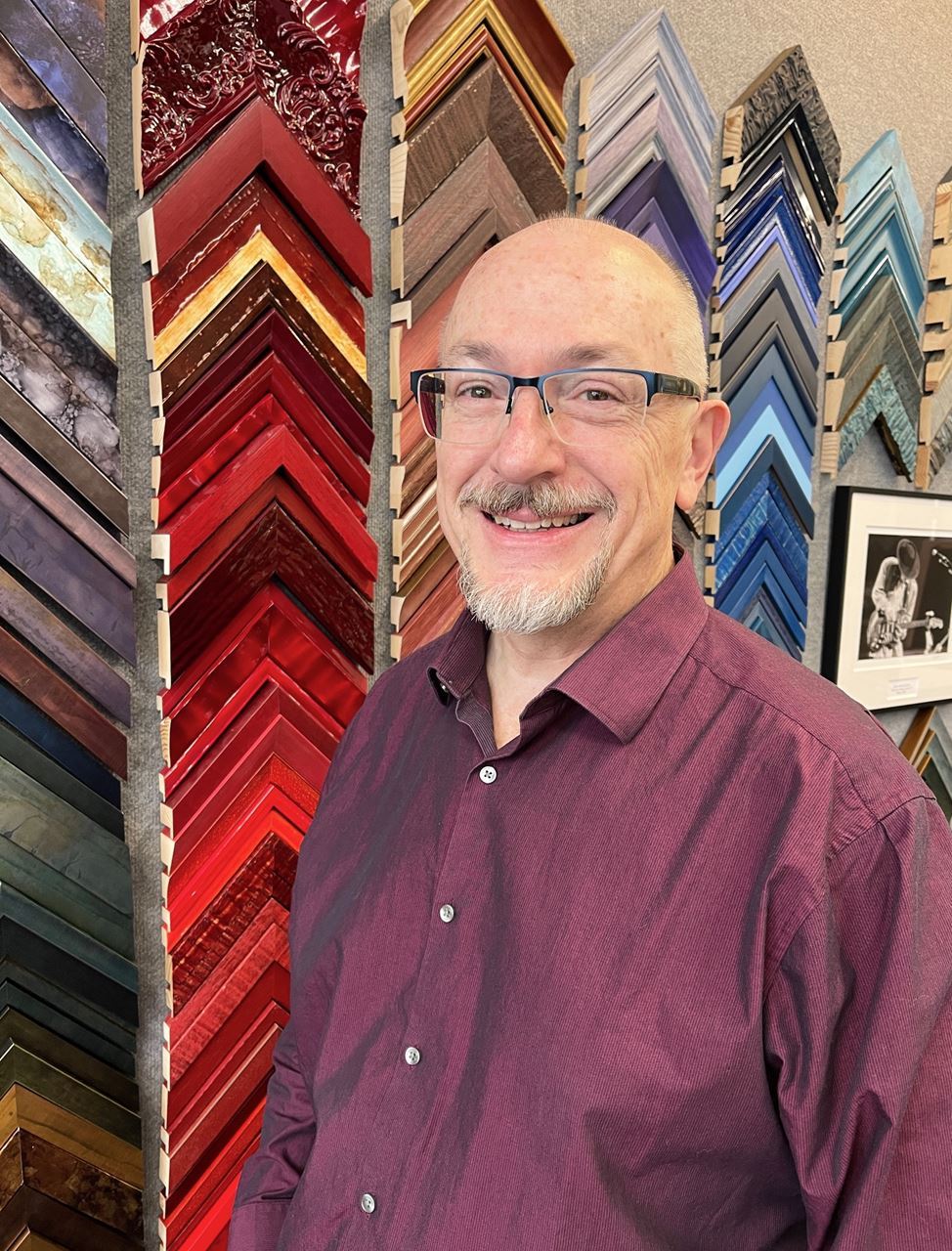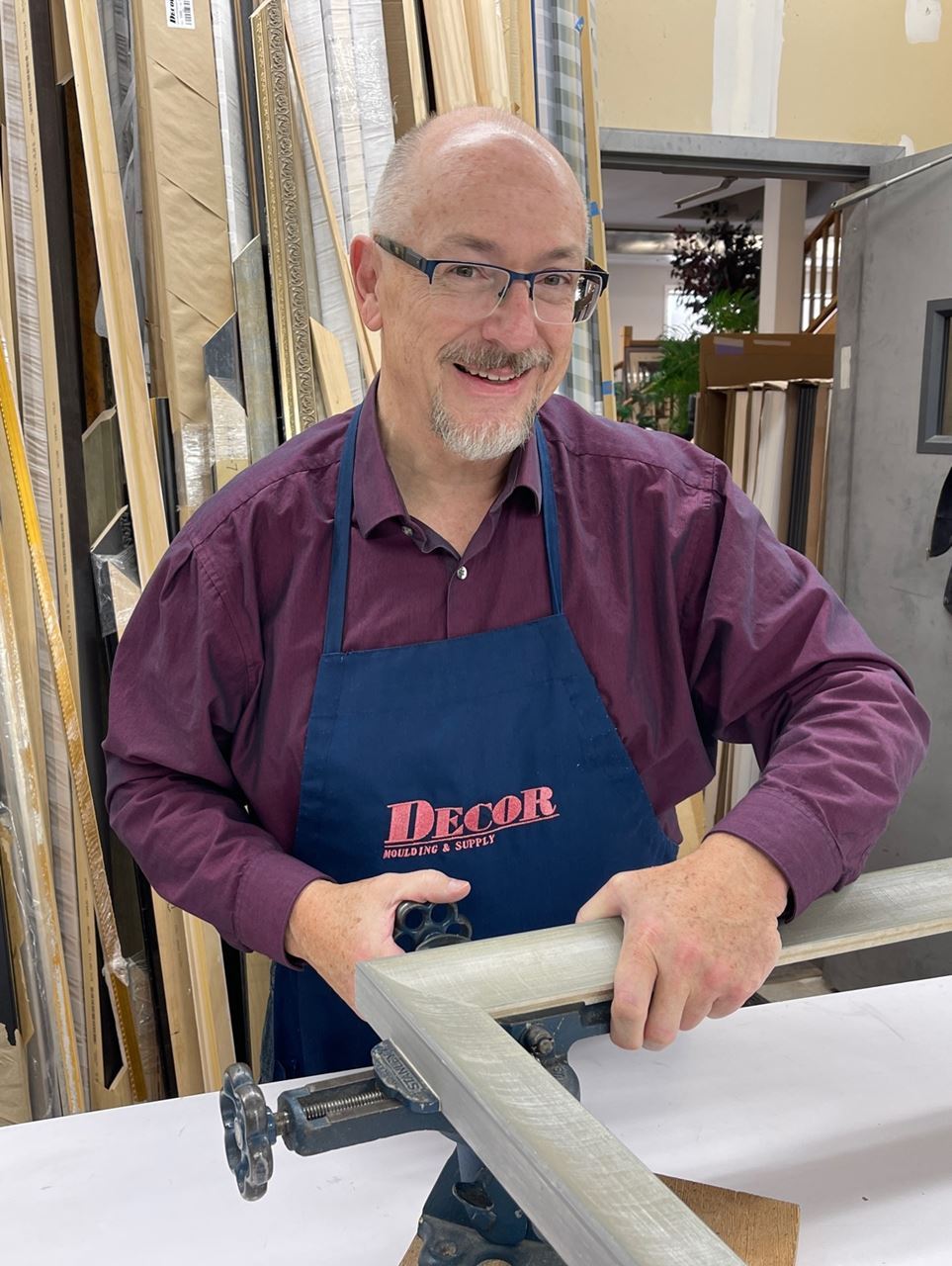january FEATURED artist |
David in his Rye shop
David at work
David and one of his large projects | Framing: An Art in Itself by Liz Keroack, President of Rye Art Study with the assistance of David Pratt, MCPF A frame is a structure that gives shape and support, but frames for art and other objects of value—whether in a museum, gallery, or home—do so much more. Throughout history frames have evolved to define a work and give it definition, an end point. At the time of the Renaissance, the population became more mobile, and with that mobility came the desire to take what they valued with them. Moveable framing resulted. The commercial effect of being able to pair art with a frame (or remove art from it) can be seen in the 15th century drawing The Frame-maker’s Shop, attributed to Salomon de Bray. According to the Professional Picture Framers Association, there are 12,000 retail frame shops nationwide. One of those is D. Pratt Framer (www.dpratframer.com) in Rye, NH and Kittery, ME, whose proprietors are David Pratt, MCPF (Master Certified Picture Framer) and his wife Becky S. Florence, MCPF. As Becky explains, the MCPF is a high level achieved after one has been a CPF for a minimum of a year and has passed a grueling test in front of a panel of judges. David and Becky are two of just 90 master certified picture framers worldwide and the only ones currently practicing in NH and ME. David himself got into the business by accident; after he finished his military service, he was visiting a craft store with his wife and happened to watch a man putting a frame together. After a short conversation with the framer, David was offered a job. Finding he had an aptitude for the career, he pursued learning from other framers in an apprenticeship model and from the curricula and manuals of the Professional Picture Framers Association. David stresses that the range of knowledge a framer needs is wide and covers many disciplines; mathematics, design, color theory, art history, and mechanics are just a few. Then there is the human side of the equation. A framer needs to be comfortable with and skilled at communicating with patrons. David says he takes time to get to know his patrons—what they are motivated by, what an object means to them, what their expectations are—and to study what they want framed. His goal is for the frame to enhance the object, not supplant or compete with it. To that end, he presents patrons with the best option, explaining why a particular design works well and describing the proper procedures necessary to complete the work. David is pleased that business has been surprisingly good, perhaps because COVID has encouraged people to re-examine and re-value their possessions and the memories associated with them. As they have spent long hours in their homes and looked critically around them, their stylistic preferences have changed. While classic framing never goes out of style, the choice of frames, glass, mats and the like are now vast. However, as Picasso once said, “The frame is the art’s reward,” and so the art must be the focus with the frame receding from it. Though only 10% of people have used a custom framer, David—and other framers like him—have custom packages that start at reasonable rates. For example, David offers a frugal framing option of $59.00 for framing an 8” X 10” piece of art. Interestingly, in addition to framing David and Becky also provide such specialized services such as art conservation, restoration, and installation. So, whether your framing needs are for displaying an original oil painting or for showcasing three hairs of Marilyn Monroe (yes, this really was a job David and Becky undertook), consider preserving and elevating what is meaningful to you by visiting a custom framer. |






